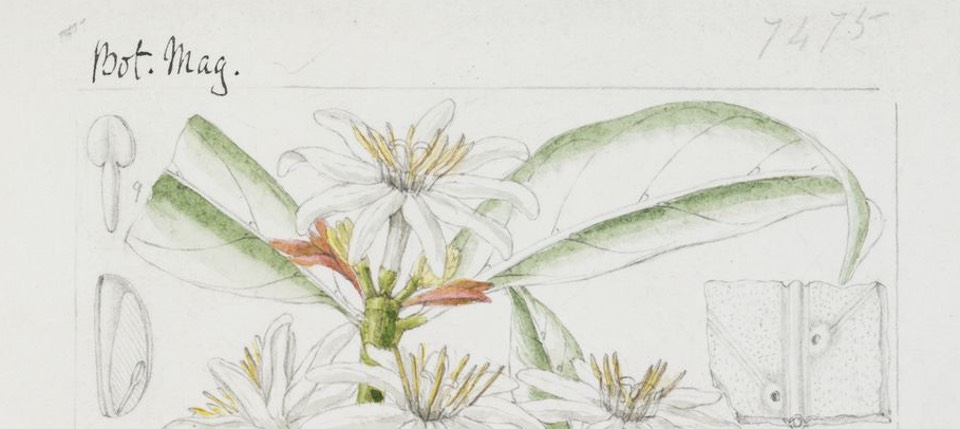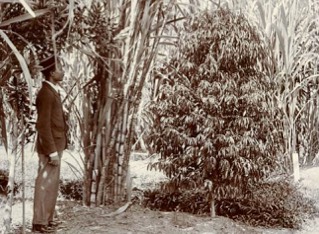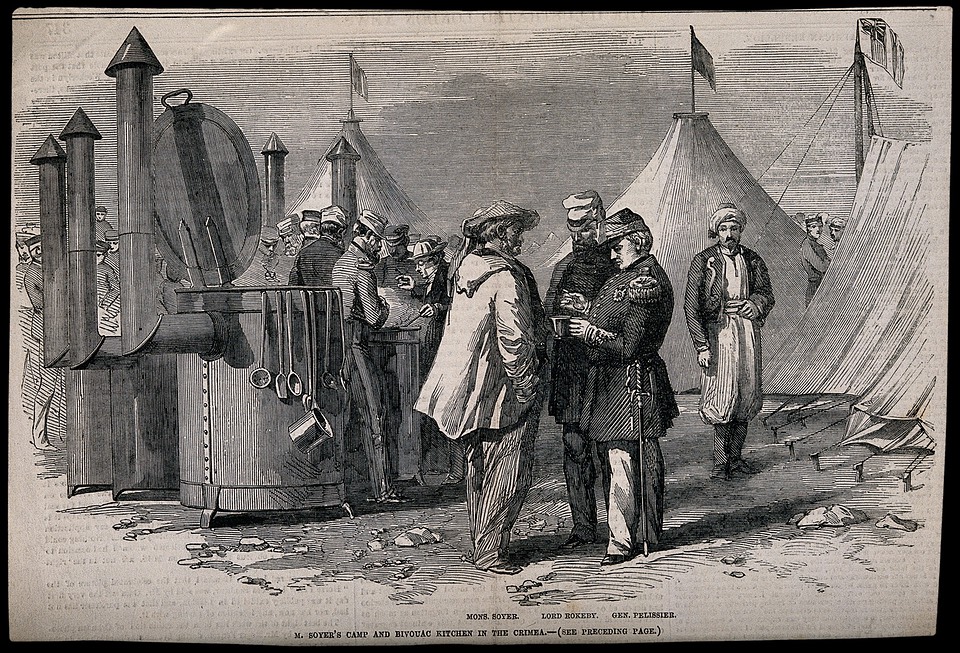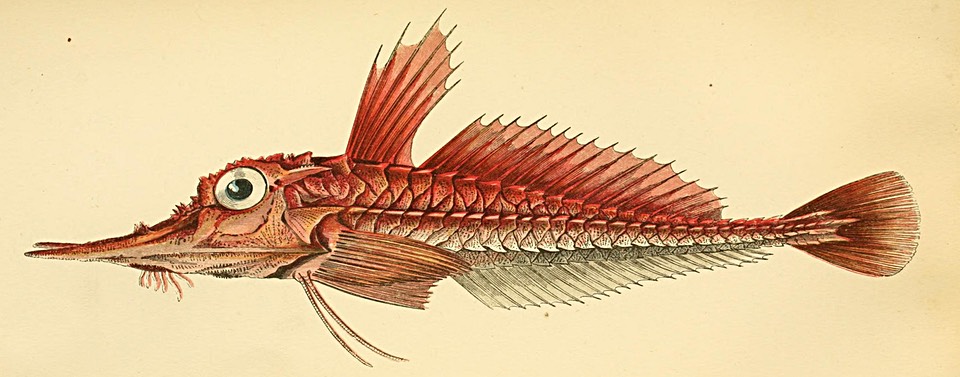You may be wondering, if you care about these things as I do, why there is a chilli species called Capsicum chinense.
How the chilli pepper conquered China Foreign pepper finds a home

Podcast: Play in new window | Download (Duration: 30:02 — 27.6MB)
Subscribe: Google Podcasts | Spotify | Android | RSS | More

Think of Szechuan food and you think of hot and spicy, chilli-laden dishes. At least, I do. Chilli pepper is firmly established as the most widely used spice around the world, and nowhere more so than in China. And yet, chillies were unknown in China before about 1570. They arrived by at least three different routes, almost certainly more than once in each area, and found favour with ordinary Chinese people extremely rapidly. The ruling classes were not nearly as taken with them, and by and large failed to understand their importance. That contrast lasted through the first two centuries of the chilli in China, although it did not stop chillies eventually permeating Chinese culture high and low. For the people of Szechuan and Hunan, they became an essential part of their identity.
All this, and much, much more, comes from a new book by Professor Brian Dott, of Whitman College in Washington State. He combed through ancient texts and modern to trace the history of chillies in China and how they became such an essential element of life for so many people.
Notes
- Brian Dott’s book The Chile Pepper in China is published by Columbia University Press. This link will help you buy it from an independent bookshop in the US and this one in the UK. Both probably ship elsewhere too.
- You can download a transcript, thanks to the generosity of people who support the show financially. Think about joining them.
- I have no idea whether this version of Spicy Girls is a good one, but I thought I would share it anyway.
- Banner photo, by Xinhua, shows farmers in Gansu Province airing drying chillis. I got it here uncredited.
It’s coffee, but not as we know it Two long lost coffee species brought to light

Podcast: Play in new window | Download (Duration: 20:57 — 19.3MB)
Subscribe: Google Podcasts | Spotify | Android | RSS | More
 I’ll be honest, I thought I was pretty savvy about coffee taxonomy knowing that there were two kinds, arabica and robusta. Not surprisingly, perhaps, a research paper about “Coffea stenophylla and C. affinis, the Forgotten Coffee Crop Species of West Africa” caught my attention. And of course, as I should have known, there are scores of different coffee species. What is particularly intriguing about C. stenophylla, however, is that in its day people considered it a very fine coffee indeed. A 1925 monograph recorded that “The beans are said, by both the natives and the French merchants, to be superior to those of all other species.”
I’ll be honest, I thought I was pretty savvy about coffee taxonomy knowing that there were two kinds, arabica and robusta. Not surprisingly, perhaps, a research paper about “Coffea stenophylla and C. affinis, the Forgotten Coffee Crop Species of West Africa” caught my attention. And of course, as I should have known, there are scores of different coffee species. What is particularly intriguing about C. stenophylla, however, is that in its day people considered it a very fine coffee indeed. A 1925 monograph recorded that “The beans are said, by both the natives and the French merchants, to be superior to those of all other species.”
So what happened to it? And what are the chances of a revival? Jeremy Haggar, of Greenwich University, told me.
Notes
- The original paper is Lost and Found: Coffea stenophylla and C. affinis, the Forgotten Coffee Crop Species of West Africa.
- As I mentioned at the end of the episode, I have a page of special, topic based collections. Coffee is one of them.
- Banner image is the original painting of C. stenophylla as reproduced in Curtis’s Botanical Magazine in 1896. The cover photograph is from Kew, and shows C. stenophylla growing in Trinidad. The man, we are helpfully told, is 1.72 m tall.
Alexis Soyer The very model of a modern chef

Podcast: Play in new window | Download (Duration: 18:04 — 16.7MB)
Subscribe: Google Podcasts | Spotify | Android | RSS | More
 Alexis Soyer was perhaps the greatest chef of Victorian England. He designed the most modern kitchen of the 1840s and equipped it with many of his own inventions. He cooked unimaginably luxurious — and expensive — dinners for royalty and the aristocracy. He also built soup kitchens for the poor and his Famine Soup fed hundreds of thousands of destitute people in Ireland. His cookbooks sold in the hundreds of thousands, and sauces bearing his name brought luxury to the middle classes. He transformed British army cooking during the Crimean War, and the stove he invented for Crimea was still in use in the Gulf War in 1982. During the Crimean War, people said his name would live alongside Florence Nightingale’s. It didn’t, although lately Soyer, one of the first celebrity chefs, is being rediscovered.
Alexis Soyer was perhaps the greatest chef of Victorian England. He designed the most modern kitchen of the 1840s and equipped it with many of his own inventions. He cooked unimaginably luxurious — and expensive — dinners for royalty and the aristocracy. He also built soup kitchens for the poor and his Famine Soup fed hundreds of thousands of destitute people in Ireland. His cookbooks sold in the hundreds of thousands, and sauces bearing his name brought luxury to the middle classes. He transformed British army cooking during the Crimean War, and the stove he invented for Crimea was still in use in the Gulf War in 1982. During the Crimean War, people said his name would live alongside Florence Nightingale’s. It didn’t, although lately Soyer, one of the first celebrity chefs, is being rediscovered.
Notes
- Ruth Brandon’s book The People’s Chef has different subtitles in different places. You should be able to find a copy.
- Frank Clement-Lorford maintains a website dedicated to Alexis Soyer, where you can get his book and read, for example, about the restaurant, Soyer’s Universal Symposium of all Nations. There’s a more academic account by April Bullock in Gastronomica.
- Many people who write about Soyer try to reproduce his recipes. Lost Past Remembered shares some history of the Reform Club with a version of Soyer’s famous grouse salad.
- Hot on the Trail by Thomas A.P. van Leeuwen contains a few errors of fact but is good on Soyer’s inventions. Forgotten history – Soyer’s Stoves offers a more military perspective on his stoves.
- Music by Podington Bear. Images from the Wellcome Trust.
Questions of Taste And some answers

Podcast: Play in new window | Download (Duration: 20:35 — 18.9MB)
Subscribe: Google Podcasts | Spotify | Android | RSS | More

This is the third in a little mini-series on taste. First came Margot Finn discussing disputations about taste and then Chad Ludington explained how you are what you drink. Now they’re both back, along with a snippet from a long-ago episode with sommelier Marco Lori to round out the discussion. I can’t guarantee that I won’t return to the subject again in the future, not least because I find it endlessly fascinating.
The challenge, I think, is disentangling aspects of gustatory taste that are common to all human beings from those that are overlaid — or do I mean underpinned? — by personal experience or cultural context. So when we say sweet is pleasurable and bitter aversive, what does it mean to say that an adult has a sweet tooth? I freely admit to having a bit of a sweet tooth myself, but I also revel in bitter tastes. How did that happen?
Another puzzle is the memory of complex flavours and how we analyse, process, store and recall the memory. I’ve never put much effort into being able to discriminate among similar but different tastes; I can just about recognise certain wines, for example, but am in awe of people who can discern a particular maker or, even more so, a vintage. So I’m intrigued by Chad Ludington’s thought experiment, that a bunch of randomly selected people would, over time, converge on liking the same few examples of a particular food. Would they? I’d love to see the experiment tried.
Our conversation sent me back to consider some things I first read back in 2011, on the website of Seth Roberts. He was an extremely interesting psychologist and writer who was a great one for self-experimentation. Seth wrote that side-by-side comparisons provided the best opportunity to learn about differences and resulted in an almost instant connoisseurship, which he called the Willats Effect after a friend who pointed it out to him. And, as Seth explained, there’s a downside to this:
Five or six years ago I went to a sake-tasting event in San Francisco called “The Joy of Sake”. About 140 sakes. In a few hours I became such a sake connoisseur that the sake I could afford — and used to buy regularly — I now despised. The only sake I now liked was so expensive ($80/bottle) that I never bought another bottle of sake.
Starting with The Willat Effect: Side-by-Side Comparisons Create Connoisseurs and following the links from there you’ll see that although the results are sometimes confounded, it does seem to be the case that side-by-side comparisons very effectively show you what you like.
I’m ready to try that with chocolate. Or bitter liqueurs. You know where to find me.
Notes
- Food Fights, the book that prompted this mini-series, is published by University of North Carolina Press.
- Chad Ludington teaches history at North Carolina State University.
- S. Margot Finn is “inconsistently” on Twitter.
- Marco Lori’s website is Off the Vine
- Banner photo from the Biodiversity Heritage Library. Those barbels around its mouth are where it keeps its taste buds. Cover photo by Anne on Flickr. Twitter photo by Jason Lam from Flickr
